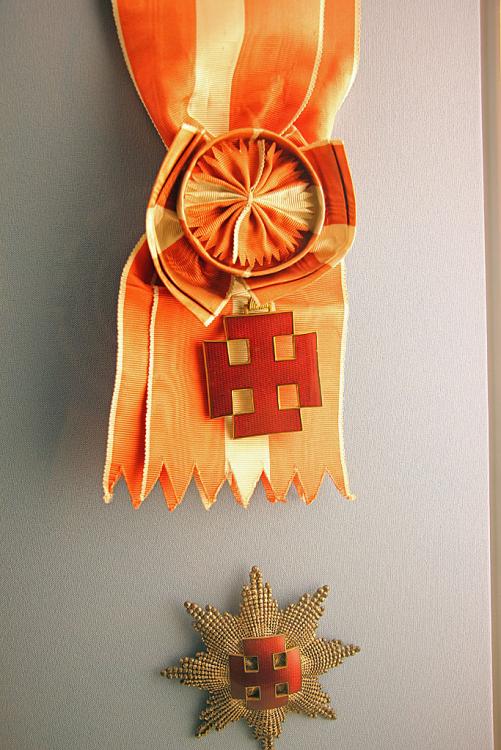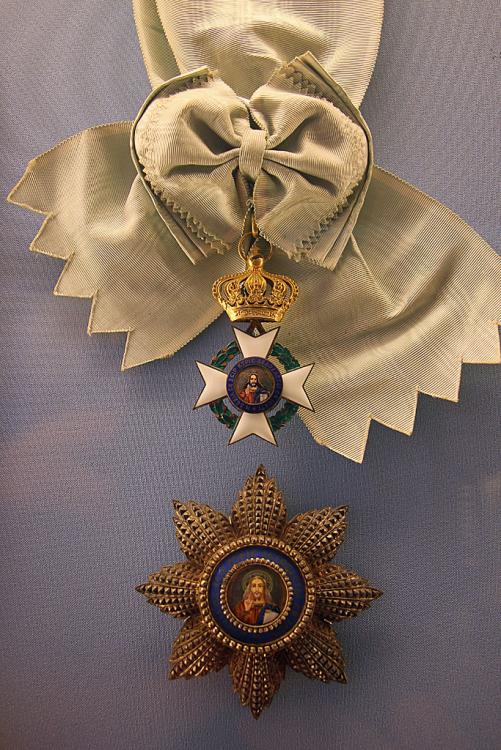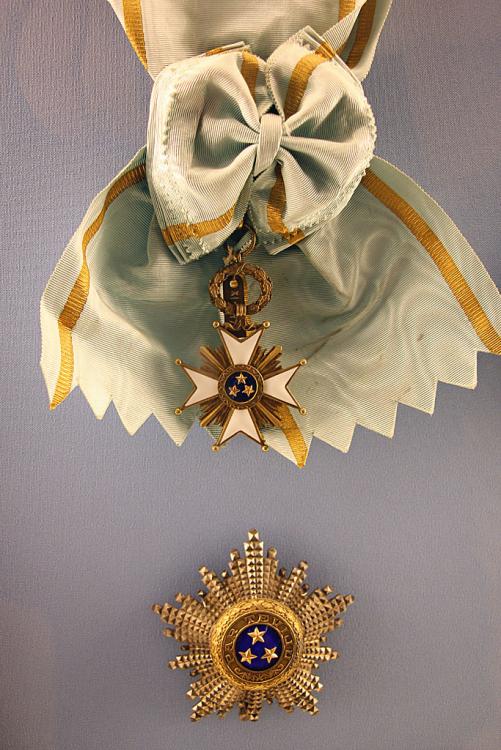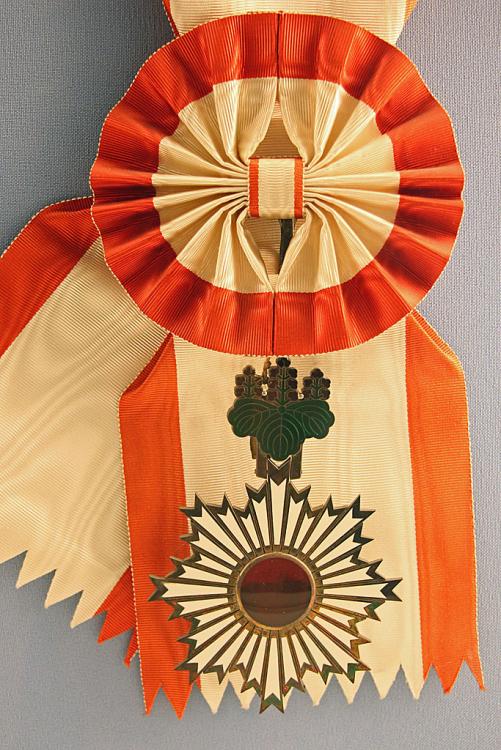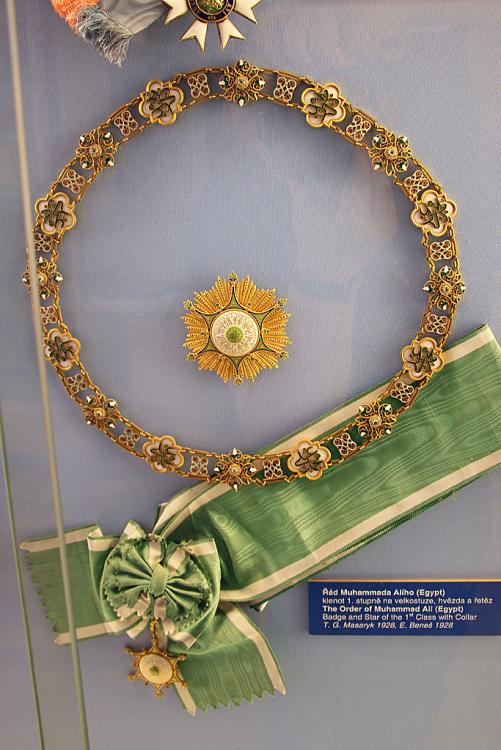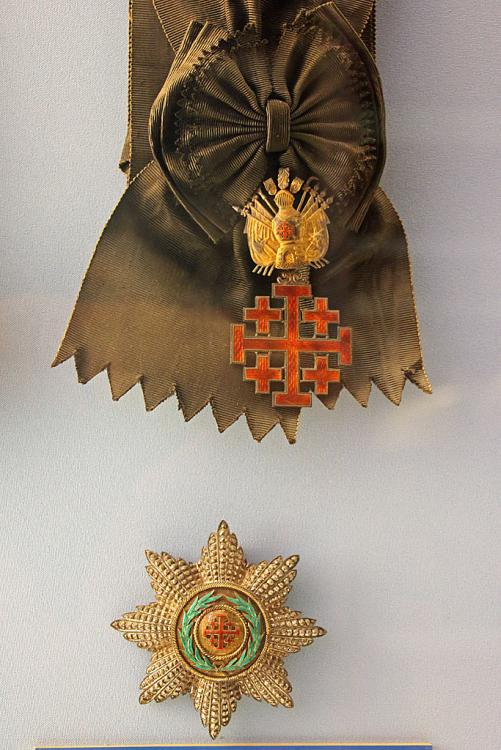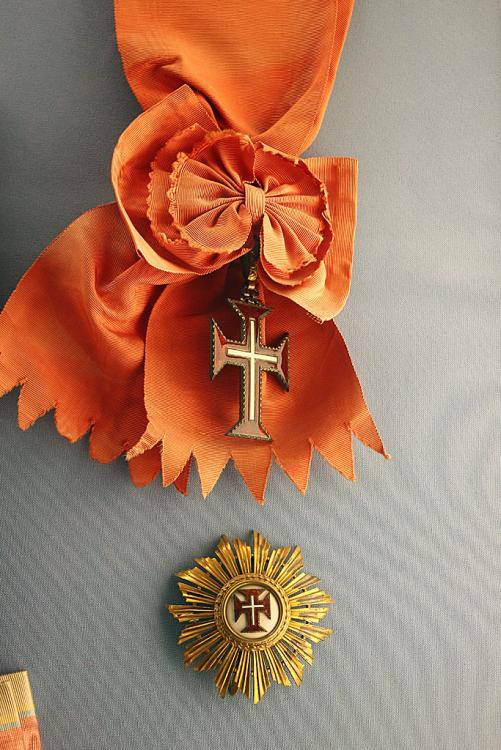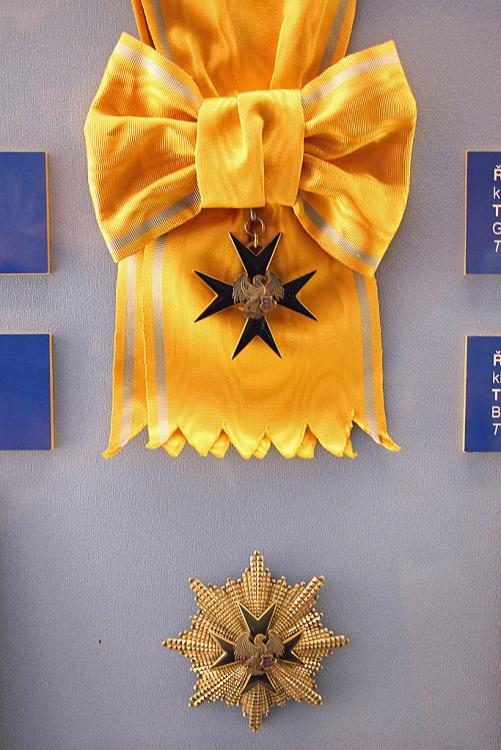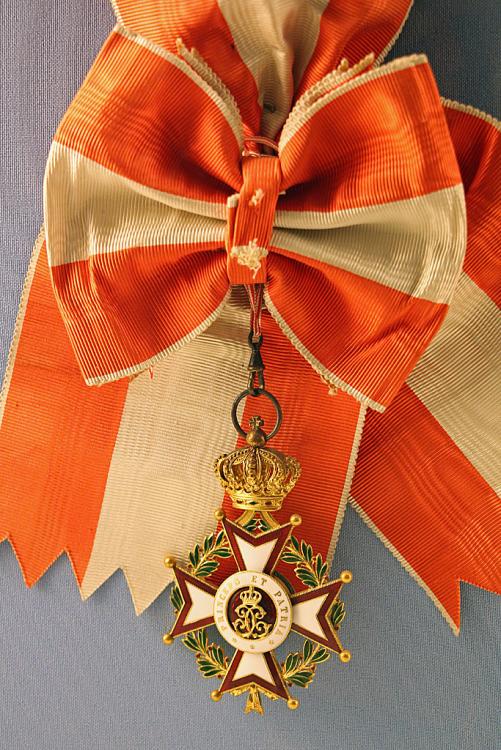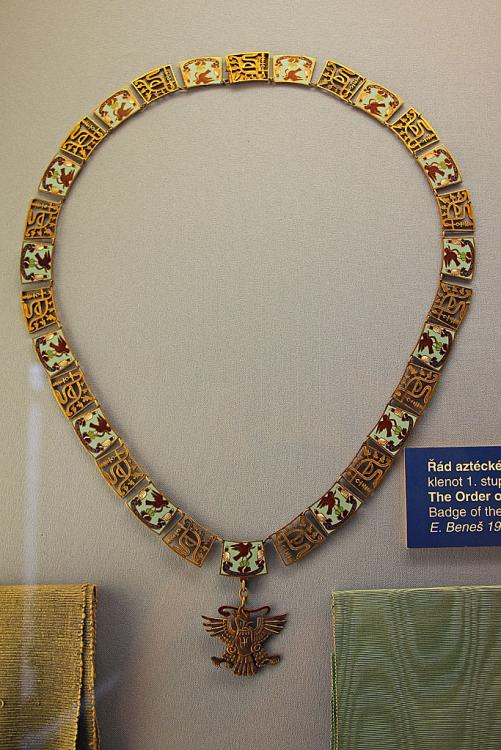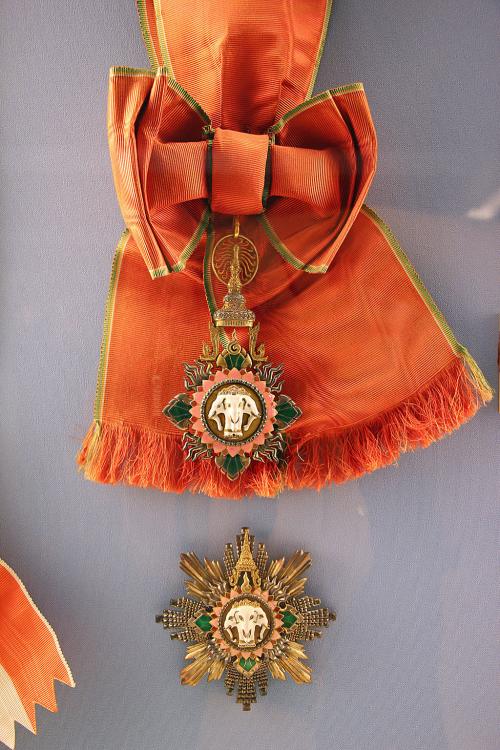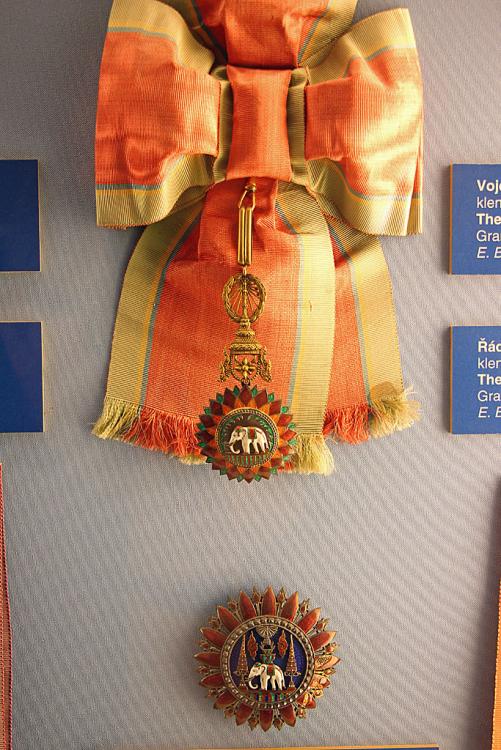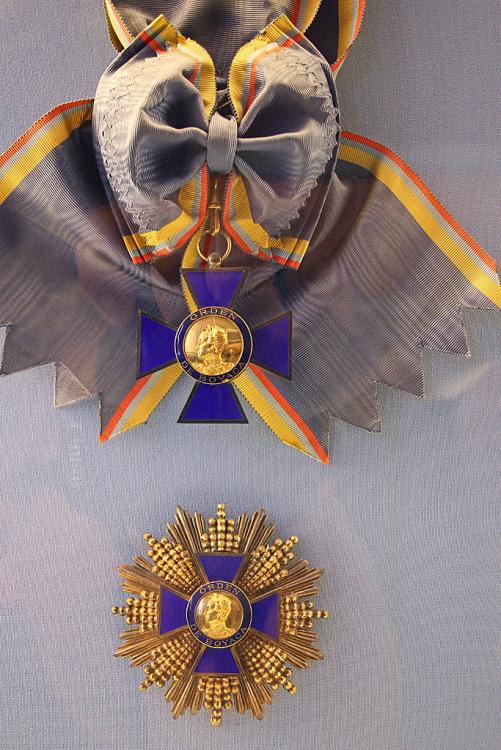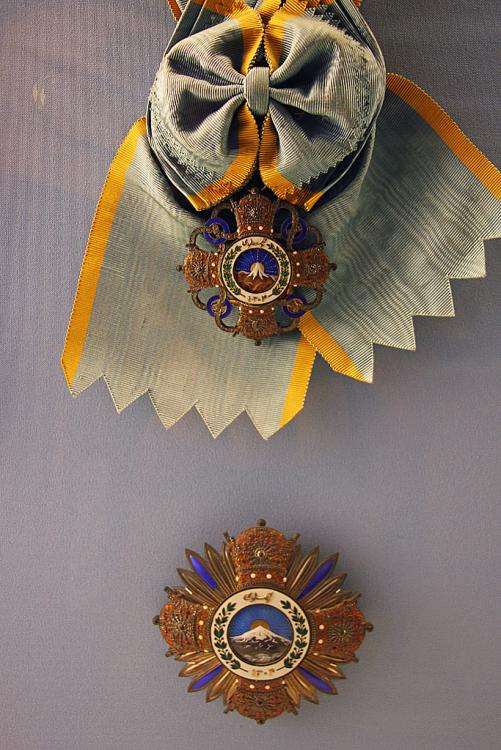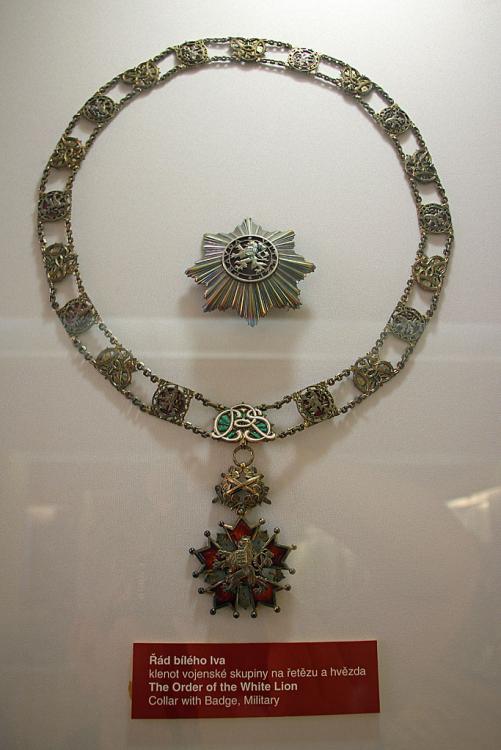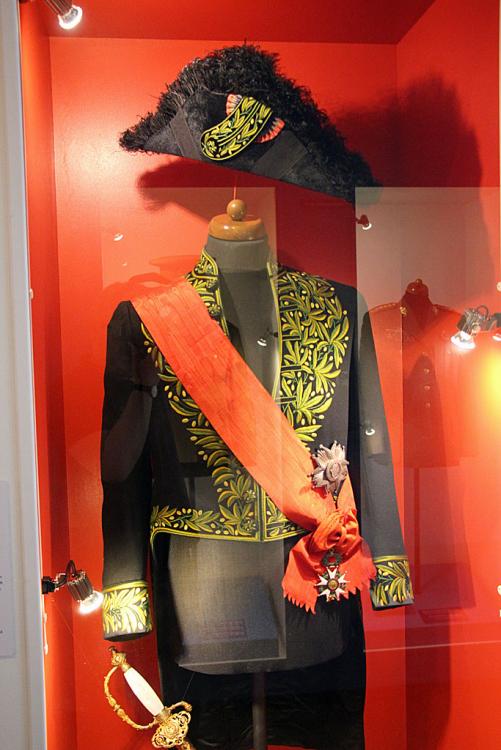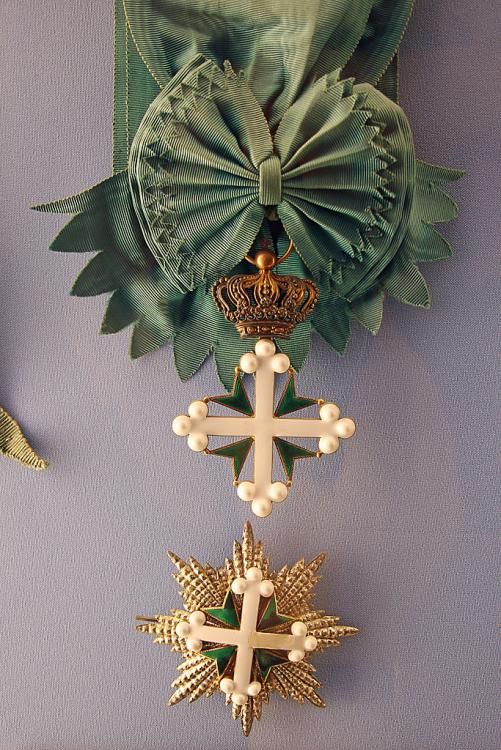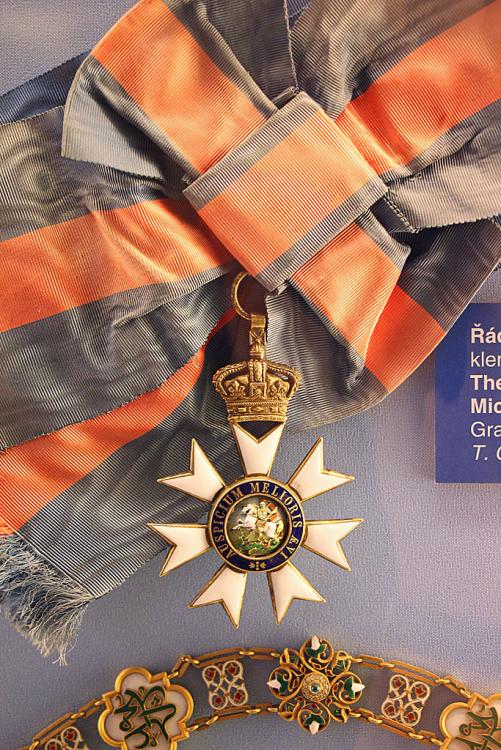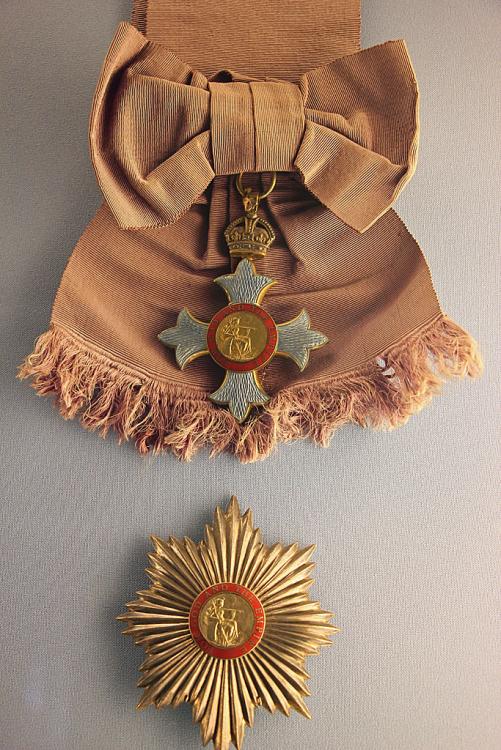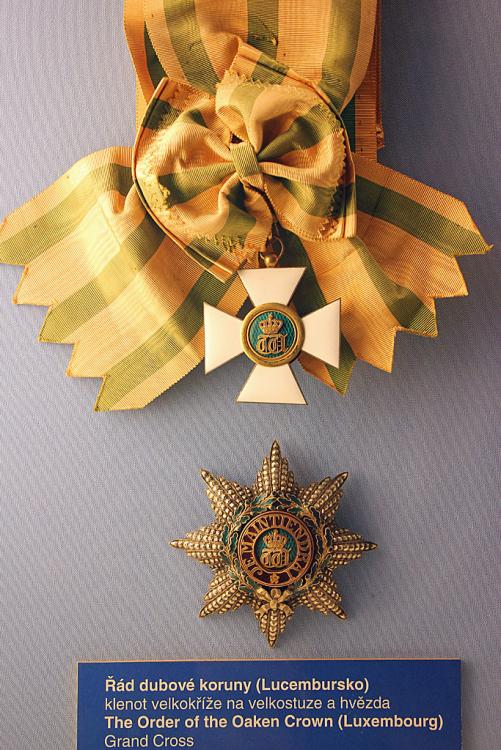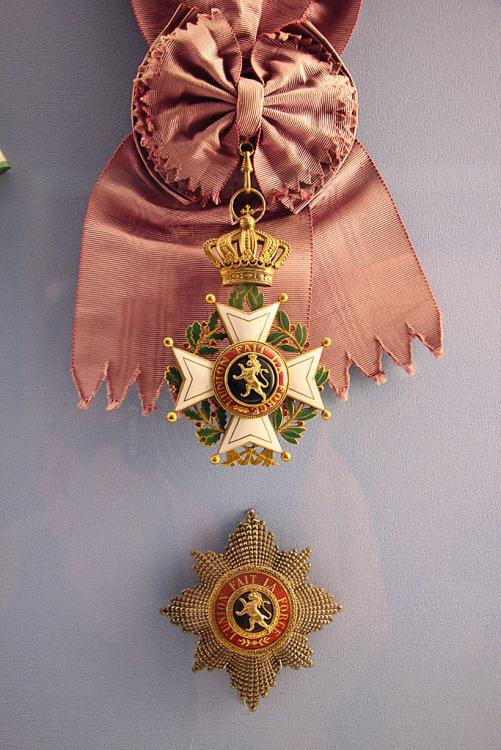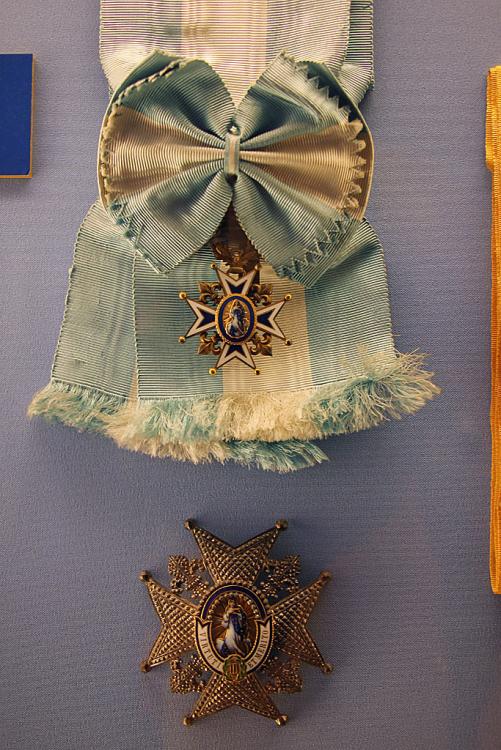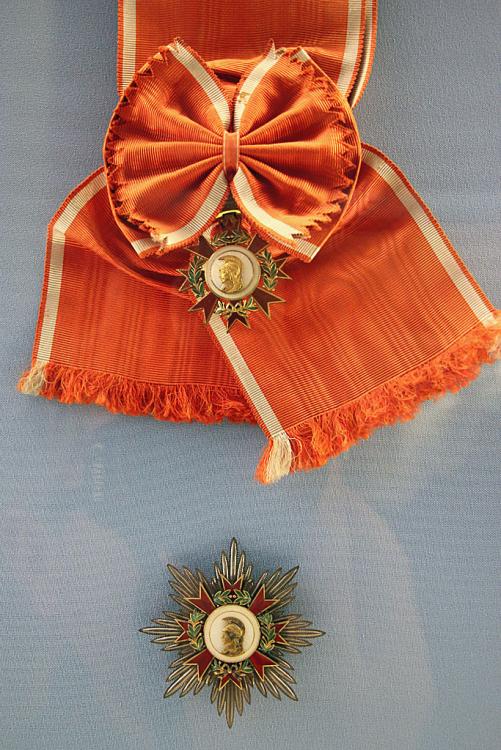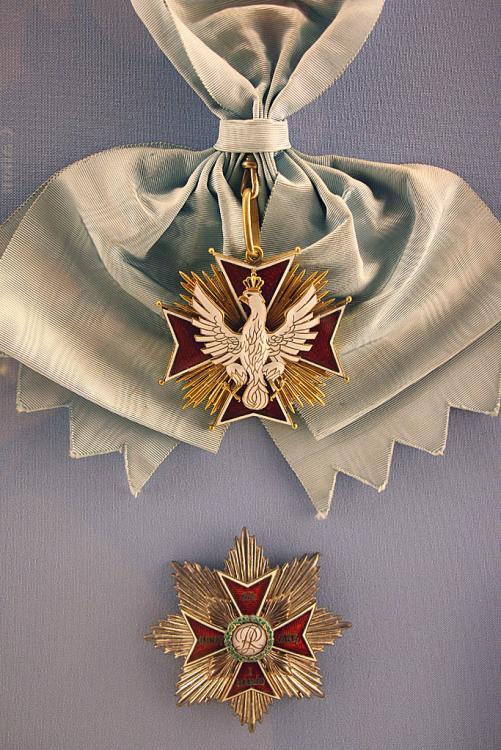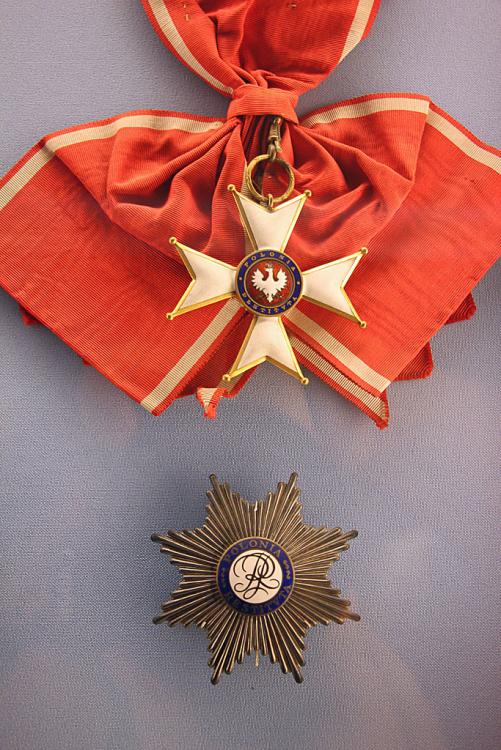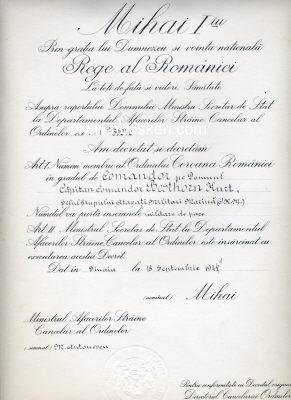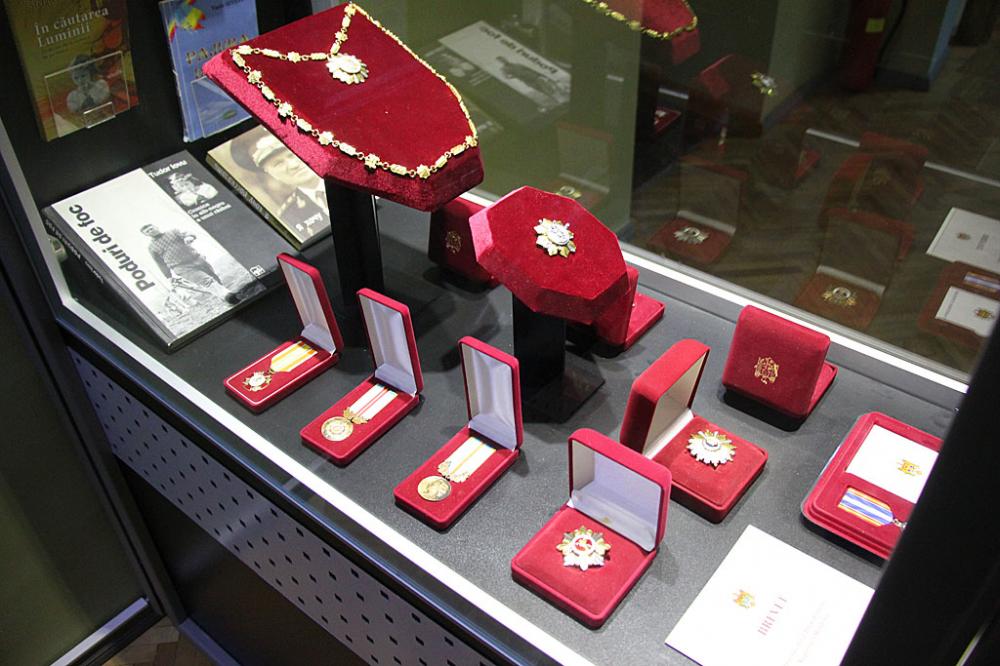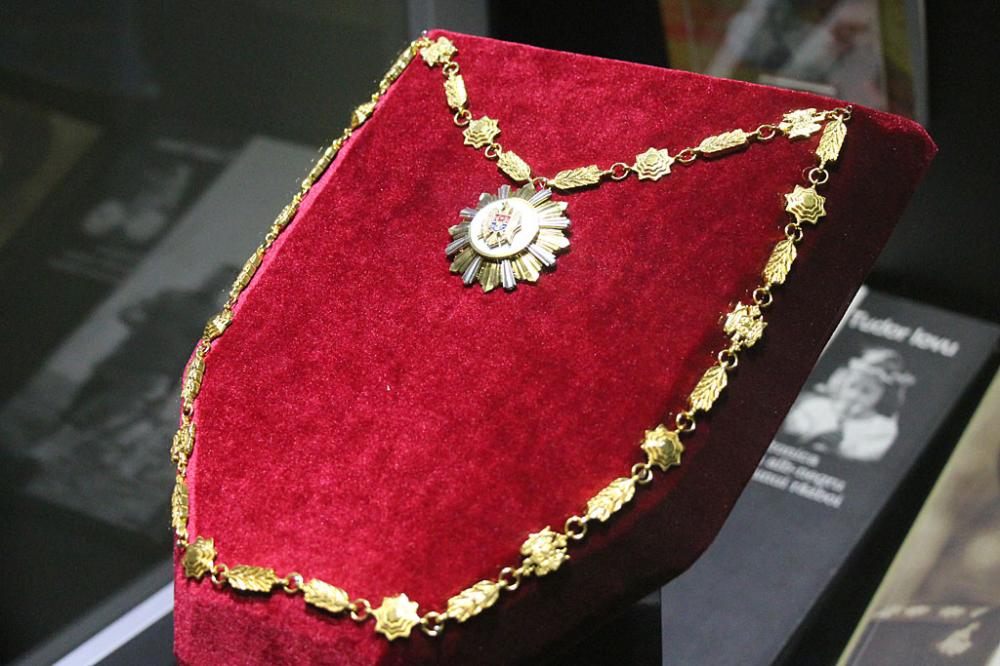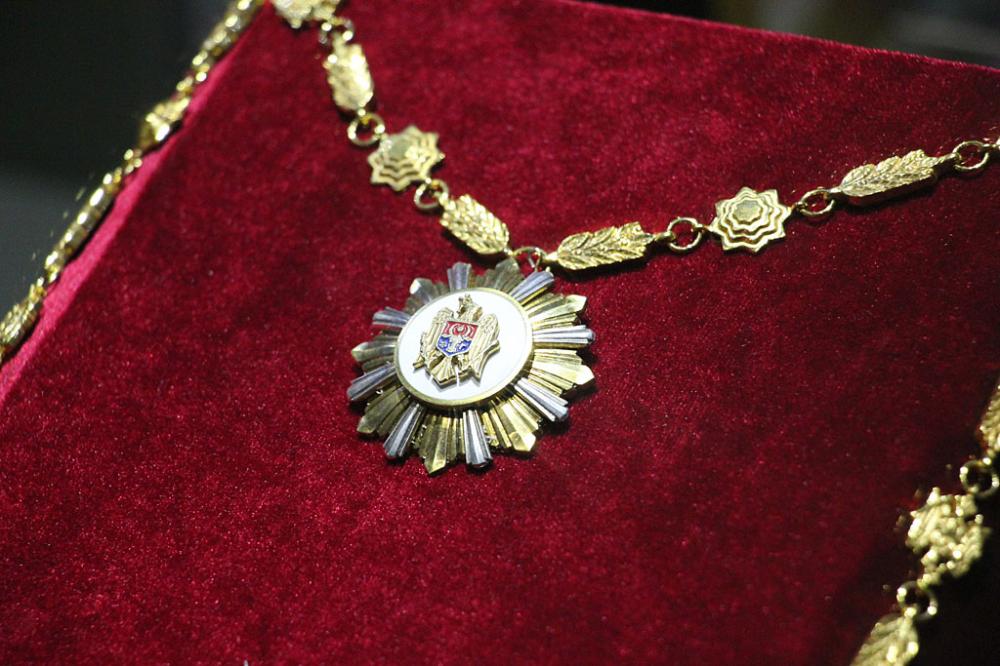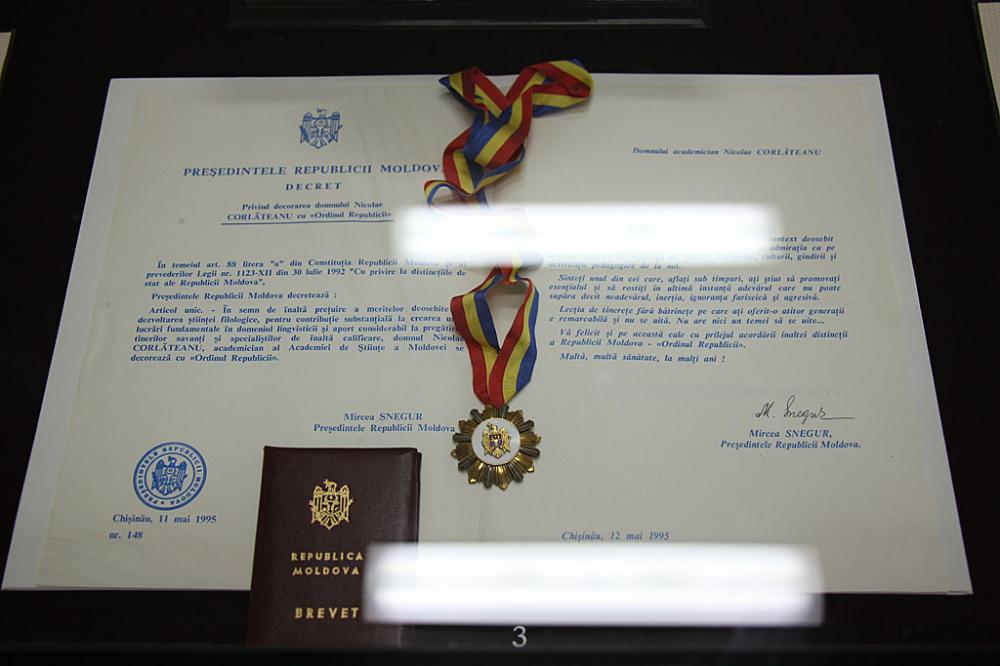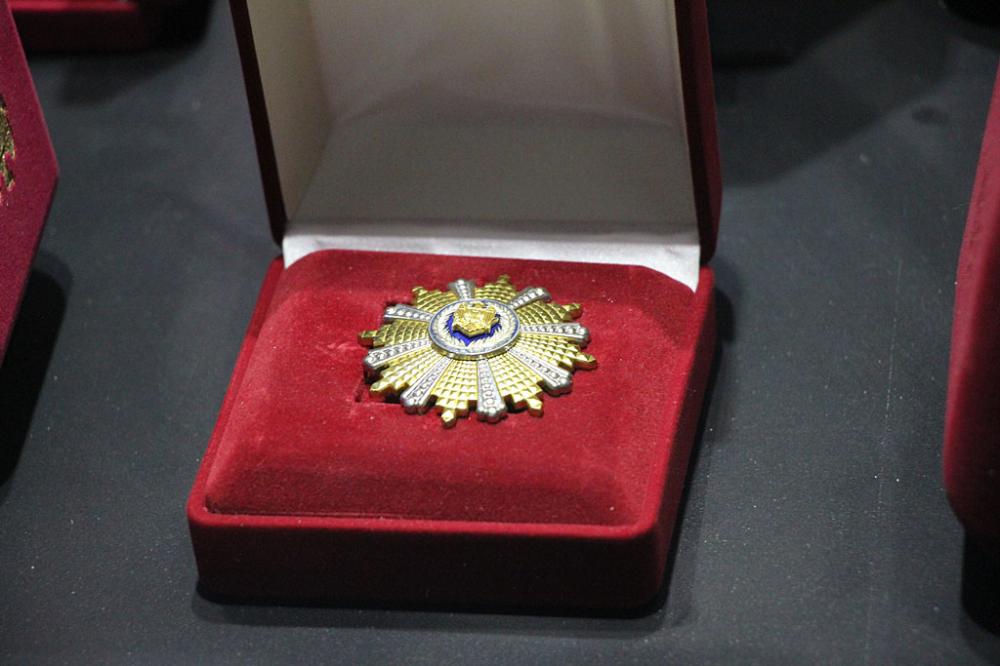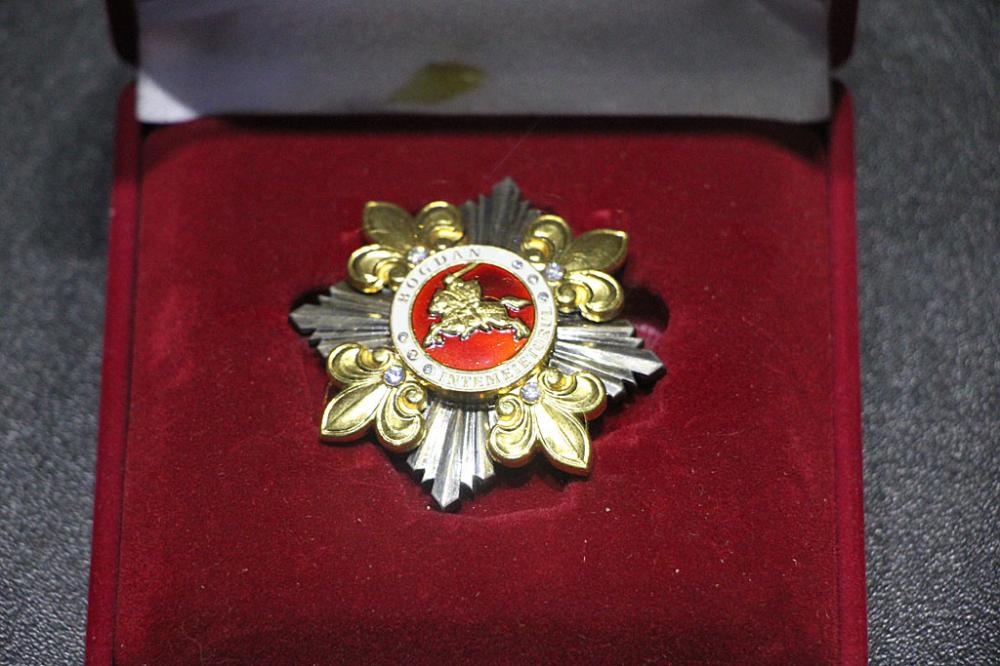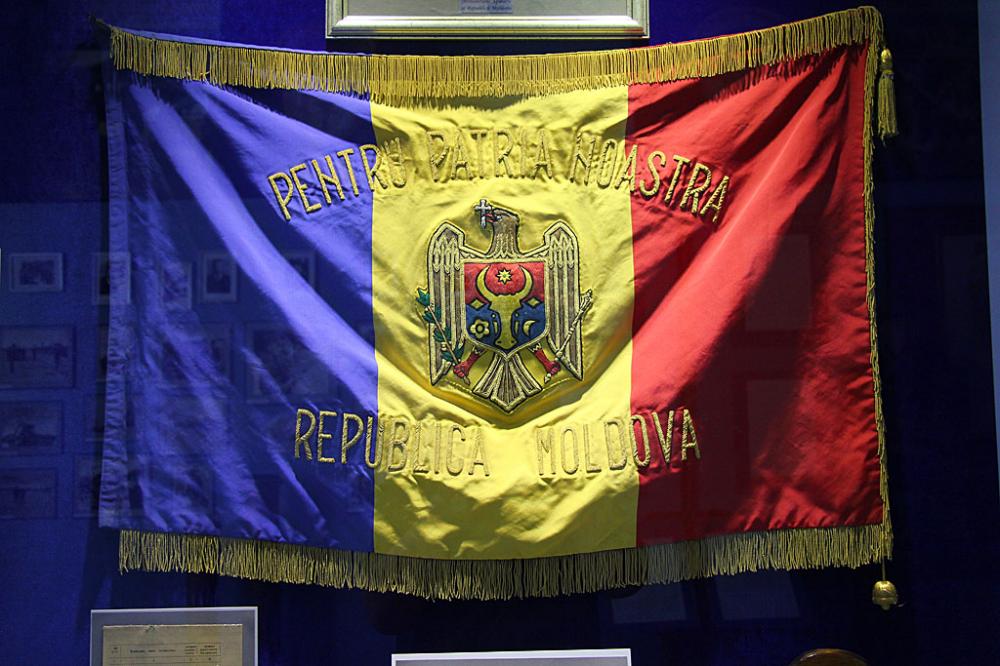-
Posts
1,721 -
Joined
-
Last visited
-
Days Won
3
Content Type
Profiles
Forums
Blogs
Gallery
Events
Store
Everything posted by Carol I
-
The War Museum of Thessaloniki should be a must for collectors of Greek decorations as it has a very large display of Greek orders and medals organised as a reference catalogue. The Order of the Redeemer The Order of George I The Order of George I with swords The Order of Welfare The Order of the Phoenix (with and without swords) The Royal House Order of Saints George and Constantine The Royal House Order of Saints Olga and Sophia The Order of Honour
-

Czechoslovak presidential orders
Carol I replied to Carol I's topic in Central & Eastern European States
1st Class of the Honour Decoration for Services to the Republic of Austria (Austria) Awarded to Edvard Beneš in 1926 Grand Cross of the Order of the Redeemer (Greece) Awarded to Tomáš G. Masaryk in 1927 and to Edvard Beneš in 1933 Grand Cross of the Order of the White Eagle (Yugoslavia) Awarded to Edvard Beneš in 1929 Grand Cross of the Order of the Star of Karageorge (Yugoslavia) Awarded to Tomáš G. Masaryk in 1920 and to Edvard Beneš in 1936 Grand Cross of the Order of Three Stars (Latvia) Awarded to Tomáš G. Masaryk in 1927 and to Edvard Beneš in 1927 Grand Cross of the Order of the Chrysanthemum (Japan) Awarded to Tomáš G. Masaryk in 1928 Grand Cross of the Order of the Rising Sun (Japan) Awarded to Edvard Beneš in 1928 Grand Cross with Collar of the Order of Muhammad Ali (Egypt) Awarded to Tomáš G. Masaryk in 1928 and to Edvard Beneš in 1928 Grand Cross of the Order of the Holy Sepulchre (Vatican) Awarded to Tomáš G. Masaryk in 1929 Grand Cross of the Order of the Grand Duke Gediminas (Lithuania) Awarded to Edvard Beneš in 1929 Grand Cross of the Military Order of Christ (Portugal) Awarded to Edvard Beneš in 1932 Grand Cross with Collar of the Military Order of St James of the Sword (Portugal) Awarded to Tomáš G. Masaryk in 1930 and to Edvard Beneš in 1933 Grand Cross of the Order of the Eagle Cross (Estonia) Awarded to Tomáš G. Masaryk in 1931 and to Edvard Beneš in 1931 Grand Cross of the Order of St Charles (Monaco) Awarded to Edvard Beneš in 1934 Collar of the Order of the Aztec Eagle (Mexico) Awarded to Edvard Beneš in 1935 Grand Cordon (Special Class) of the Order of the White Elephant (Siam) Awarded to Tomáš G. Masaryk in 1935 Grand Cross of the Order of the White Elephant (Siam) Awarded to Edvard Beneš in 1935 1st Class of the Order of the Brilliant Jade (China) Awarded to Edvard Beneš in 1936 1st Class of the Order of the Propitious Cloud (China) Awarded to Edvard Beneš in 1947 Grand Cross of the Order of the Boyaca (Colombia) Awarded to Tomáš G. Masaryk in 1937 and to Edvard Beneš in 1937 Grand Cordon of the Order of Pahlavi (Persia) Awarded to Edvard Beneš in 1937 -
I have recently visited the Army Museum in Prague where the orders of the interwar Czechoslovak presidents are on display and I thought I should share with you the images of these orders. Collar of the Order of the White Lion (Czechoslovakia) Grand Cross of the Order of Legion of Honour (France) Awarded to Tomáš G. Masaryk in 1921 and to Edvard Beneš in 1922 Uniform of the Order of Legion of Honour (France) Attributed to Edvard Beneš Grand Cross of the Order of St Mauritius and Lazarus (Italy) Awarded to Tomáš G. Masaryk in 1921 Grand Cross of the Order of the Crown of Italy (Italy) Awarded to Edvard Beneš in 1921 Grand Cross with Collar of the Order of St Michael and St George (Great Britain) Awarded to Tomáš G. Masaryk in 1923 Grand Cross of the Order of the British Empire (Great Britain) Awarded to Edvard Beneš in 1923 Grand Cross of the Order of the Oak Crown (Luxembourg) Awarded to Edvard Beneš in 1923 Grand Cross of the Order of Leopold (Belgium) Awarded to Tomáš G. Masaryk in 1923 and to Edvard Beneš in 1923 Grand Cross of the Order of Charles III (Spain) Awarded to Tomáš G. Masaryk in 1924 and to Edvard Beneš in 1924 Grand Cross of the Order of the Republic (Spain) Awarded to Tomáš G. Masaryk in 1935 and to Edvard Beneš in 1935 Grand Cross of the Order of the White Eagle (Poland) Awarded to Tomáš G. Masaryk in 1925 Grand Cross of the Polonia Restituta (Poland) Awarded to Edvard Beneš in 1925
-

Romania, Honour Cross of the Order of Merit - QUERY
Carol I replied to P.F.'s topic in Central & Eastern European States
The Honour Cross only had two classes, with 1st class the higher grade and 2nd class the lower one. -

Romania, Honour Cross of the Order of Merit - QUERY
Carol I replied to P.F.'s topic in Central & Eastern European States
Have a nice holiday! Here is one of King Carol II during the 1937 state visit to Poland (from a Polish archive). -

Romania, Honour Cross of the Order of Merit - QUERY
Carol I replied to P.F.'s topic in Central & Eastern European States
Interesting statistics. What is its origin? -

Romania, Honour Cross of the Order of Merit - QUERY
Carol I replied to P.F.'s topic in Central & Eastern European States
There are actually two distinctions that share both name and insignia elements. The first one (historically and in importance) is the Honour Sign and later Order for Merit, established in 1931. The second one is the Honour Cross for Merit established in 1933. They were initially established as dynastic awards, but were included in the national system of orders in the late 1930s and were both very scarce. The image initially posted by P.F. is the 1st class of the Honour Cross. The image posted by Paul is the first class of the order. To increase the confusion, bear in mind that the Order for Merit had as insignia a white cross surrounded by a golden thorn crown and that the same insignia was placed on the central medallion of the Honour Cross and the first class of the order. The photos below (from source, but ultimately from Life magazine) show first Ernest Urdareanu, Minister of the Court during the reign of King Carol II, and Gheorghe Tatarescu, Prime Minister during the reign of King Carol II, both wearing the officer's badge of the Order for Merit. The gallery of premiers on the government homepage shows an earlier photo of Tatarescu wearing the knight's cross of the Order for Merit. -

Romania RSR officer shoulder straps
Carol I replied to Euronymous's topic in Central & Eastern European States
Given the reticence of the communists to anything with a royal connection, I think that the Soviet system was the source of inspiration of the should board design. -

Romania RSR officer shoulder straps
Carol I replied to Euronymous's topic in Central & Eastern European States
Looking for further information on the topic I have found the image below, reportedly from a period regulation, with an example for a shoulder board for an engineer major with white background. -

Romania RSR officer shoulder straps
Carol I replied to Euronymous's topic in Central & Eastern European States
I may be guessing, but the yellow one could have been for combatant units and the white ones for non-combatants (physicians, engineers etc.) -

Romania RSR officer shoulder straps
Carol I replied to Euronymous's topic in Central & Eastern European States
The yellow one is for a communications officer and the white one is for a medical officer. -
There are not so many references on Romanian awards. One of the English language ones is Antti Ruokonen's book on Romanian Orders. If you can read Romanian you could also look for I. Safta, R. Jipa, T. Velter, F. Marinescu: Decoraţii româneşti de război 1860-1947 [Romanian War Decorations 1860-1947] Bucharest 1992 (ISBN 973-95217-6-2) or S. Catone, N. Şerbănescu, D. Bedivan: România - Decoraţii 1859-1991 [Romania - Decorations 1859-1991] Bucharest 1992, but these are rather old and outdated.
-

Romanian ribbon - help with ID
Carol I replied to kasle's topic in Central & Eastern European States
It's the ribbon for wartime military awards of the Order of the Star of Romania in use from 1938. See also Romanian Order of the Star- quick question for the contemporary ribbons of this order. -
I'm afraid that I do not have the same amount of knowledge on the medal "Barbatie si Credinta" and therefore I cannot help you much. I can only say that the award system was segregated based on rank: officers received orders and lower ranks received medals. In this system, Virtutea Militara was the highest award for bravery during WWI (corresponding to the Michael the Brave Order for officers) and Barbatie si Credinta was the lower award (corresponding roughly to the Order of the Star and the Order of the Crown for officers).
-
The 4th class was supposed to be gilt, while the 5th class was in silver or silvered. In practice, once the upper layer had worn off they got a similar appearance especially when the base metal was common or when the silver oxidised. There was also a difference in the ribbons, with the 4th class having a rosette. There were also some differences in appearance that had to do with the type of the award: peacetime military awards has swords above the cross (see the commander's cross on Megan's site under "With Swords" and compare it with the civilian version under "Civilian Normal Type I"), while wartime awards had swords between the arms of the cross (see here an image of a grand cross). Furthermore, military awards could be awarded from WWI on the Military Virtue ribbon for bravery awards. In general the criteria for awards were quite strict and one had to slowly climb through the hierarchy of the order. Nevertheless, deviations from the rule were accepted in extraordinary circumstances in wartime or for foreign recipients when there was some correlation between military rank and class of the award. These being said, the number of British military contributing directly to the Romanian war effort was very small and in my opinion most awards were of a more diplomatic character: the Romanian War Ministry asked the corresponding British one to name outstanding officers that contributed in general to the war effort or others that helped Romania from afar and that would deserve an award to strengthen the links between the two countries. There are however reports of the British Ministry abusing the occasion and naming officers at random (e.g., some that never set foot in the European theatre of war).
-
Welcome. This site is quite a good starting point for information and Megan's site a good resource for images. Can you be more specific what you would like to know about 4th and 5th classes? Is it appearance or criteria for award (the latter ca be quite tricky)? Also, what do you understand by "military awards", awards given to military during wartime or at any time?
-

Romanian Order of the Star- quick question
Carol I replied to P.F.'s topic in Central & Eastern European States
On Huesken there is an award certificate for Fregattenkapitän (Capitan Comandor in Romanian - for some reason the description is for Korvettenkapitän - Locotenent Comandor in Romanian) Kurt Besthorn who received in September 1941 the Commander's cross of the order of the Crown of Romania with peacetime military insignia. -

Romanian Order of the Star- quick question
Carol I replied to P.F.'s topic in Central & Eastern European States
There is no contradiction. A member of the diplomatic mission of a country was awarded the 'regular' order even in wartime. Therefore, a military attaché could get the corresponding insignia named 'peacetime military insignia'. One could get the 'wartime' insignia if he/she was involved in military operations. -
Military unit flag (National Army Museum in Chisinau) Orders and medals in the National Army Museum in Chisinau Order of the Republic - collar (National Army Museum in Chisinau) Order of the Republic awarded to Nicolae Corlateanu (National History Museum in Chisinau) Order of Stephen the Great (National Army Museum in Chisinau) Order of Bogdan the Founder (National Army Museum in Chisinau) Order of Honour (National Army Museum in Chisinau)
-

Romanian Order of the Star- quick question
Carol I replied to P.F.'s topic in Central & Eastern European States
I agree that the system appears quite complex at first sight, but it has an underlying logic. Please see below the four variants of the Order of the Star of Romania in use during WWII, from left to right: civilian Knight's Cross, military Knight's Cross (peacetime insignia with swords above the cross), wartime Knight's Cross (swords through the centre and yellow edges on the ribbon - non-'battlefield" awards), wartime Knight's Cross on Military Virtue ribbon (for 'battlefield' awards). -

Romanian Order of the Star- quick question
Carol I replied to P.F.'s topic in Central & Eastern European States
No, I am saying that being awarded to military personnel it could be awarded with "peacetime" military insignia (swords above the cross) or with wartime insignia (swords between the arms of the cross) depending on the activity or merits of the awardee. -

Romanian Order of the Star- quick question
Carol I replied to P.F.'s topic in Central & Eastern European States
I would venture to say that it had to do with the type of the award (peacetime or wartime), but I do not have all the details. Again, it depends on the type of award. -

Austria-Hungary Order of the Golden Fleece
Carol I replied to Carol I's topic in Austro-Hungarian Empire


